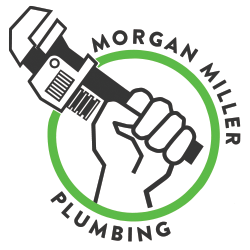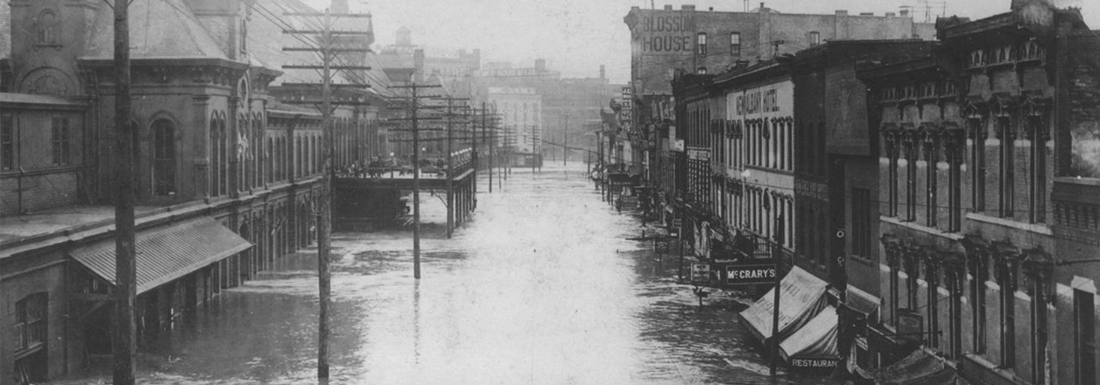Defined by fountains and shaped by rivers, Kansas City has always been deeply linked to water. In this 3-part blog we will explore Kansas City’s unique history through three of its major floods: The Great Floods of 1903, 1951, and 1993. But before we dive into the 20th century, let’s talk about the formation of the city itself. Turns out these floodplains were deciding our fates before Kansas City even existed.
Part 1: The Great Flood of 1903
WEstport Landing
The region’s largest recorded flood and arguably its most important occurred in 1844, pre-dating Kansas City and the state of Kansas itself. Without this flood, settlers heading west would’ve likely chose Independence, Missouri as their new trading hotspot – after all, Independence served as a critical trailhead1 for both Santa Fe and Oregon Trails for decades.
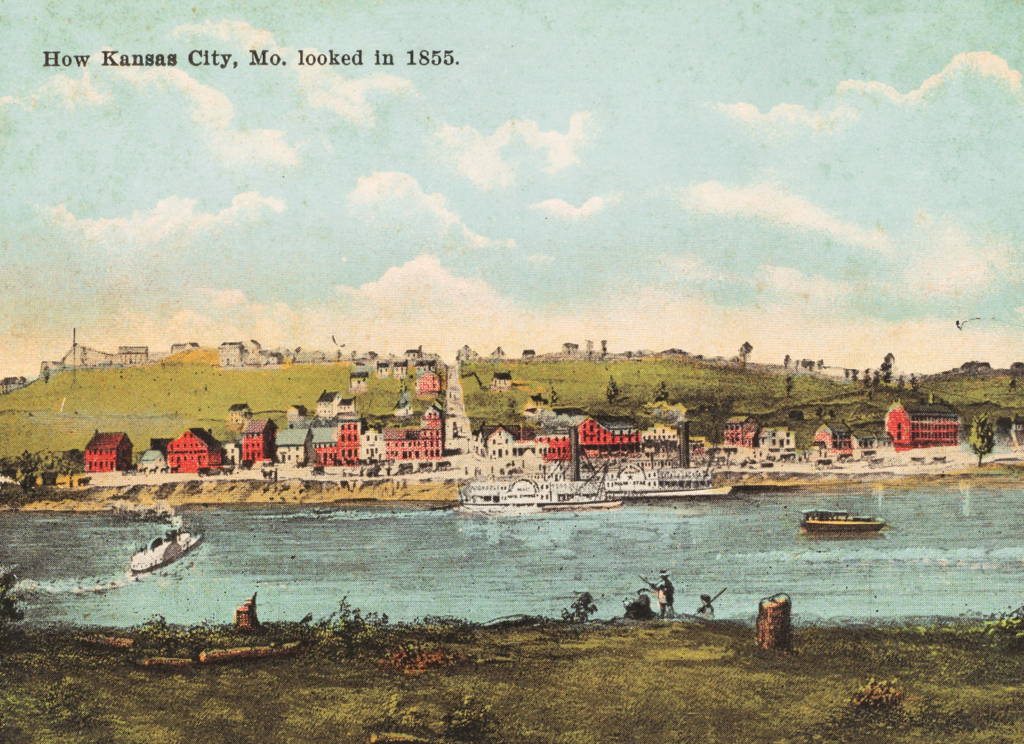
But the Flood of 1844 formed a large sandbar in front of Independence, making nearby Westport Landing the more attractive option for those traveling west by river. By 1853, Westport Landing would be formally established as Kansas City, nestled between the Missouri and Kansas (also known as Kaw) Rivers.2 As they say, the rest is history.
Plumbing Pioneers
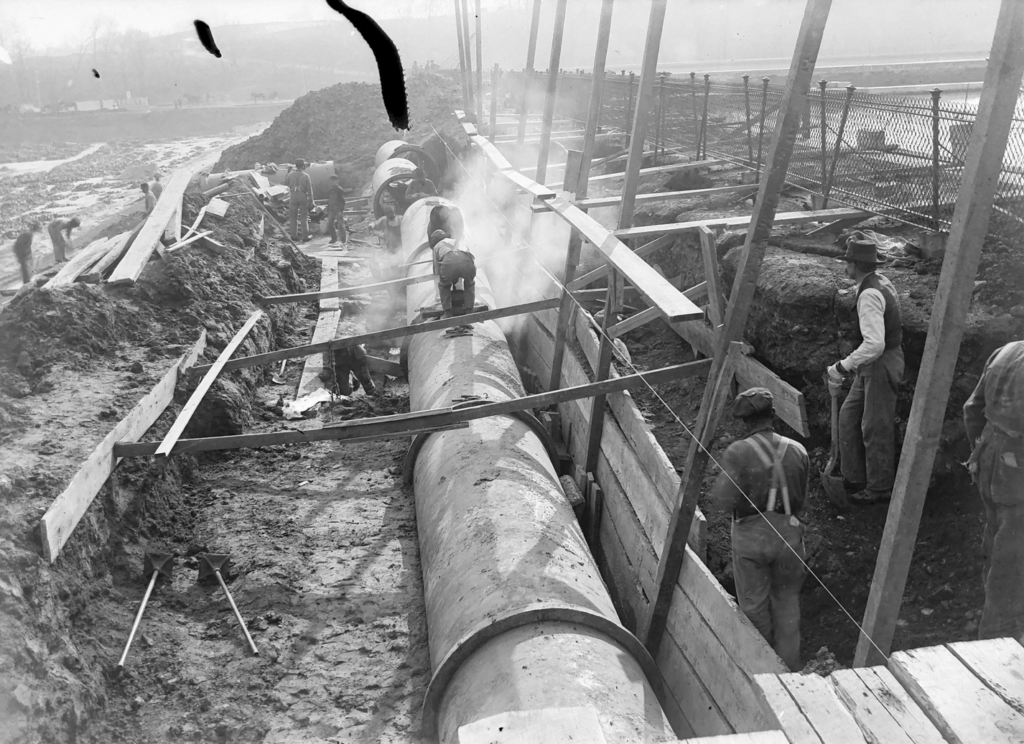
Before Kansas City could become a city of fountains, they would need basic plumbing. Plumbing itself had humble beginnings in the United States, with plumbers using hollowed out logs for piping up until the early 1800s. Philadelphia3 would become the first to move to iron pipe in 1804, and Chicago4 would be first to complete a comprehensive sewer system in 1856, just a few years after Kansas City’s founding. Kansas City Waterworks5 were established shortly after the Civil War in 1871.
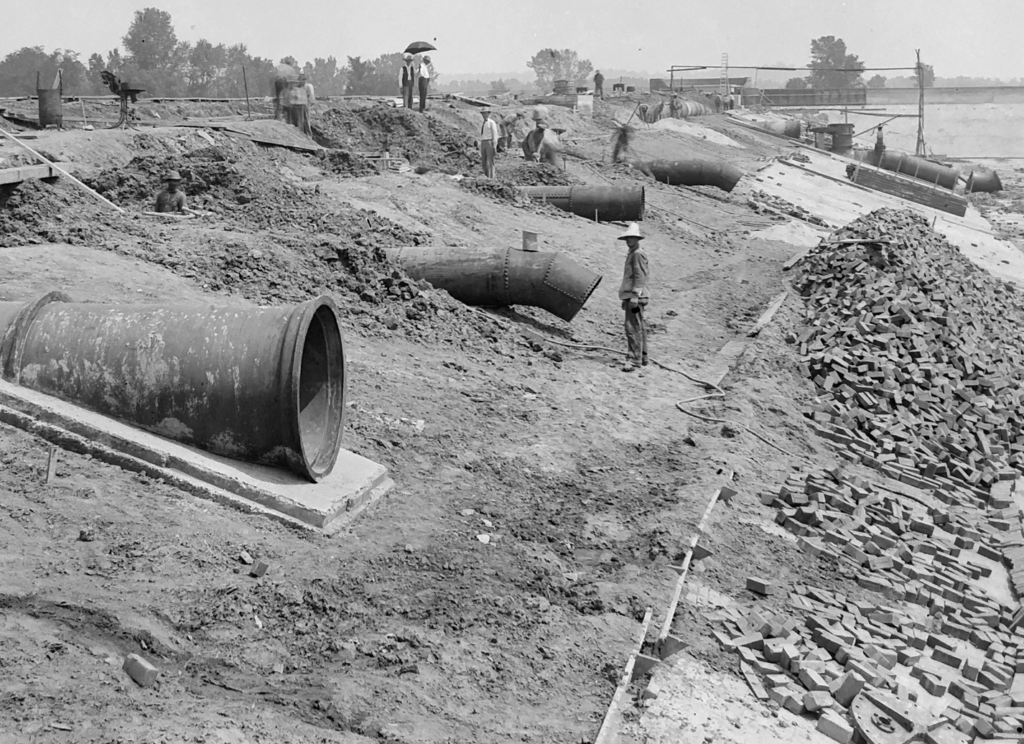
In addition to KC Waterworks, several historic institutions would start cropping up during Kansas City’s infancy. In 1881, a German emigrant named Anton Prier established a brass foundry that would go on to become Prier Products6 , a national producer of plumbing parts based in Grandview, MO. In 1887, the Reeves family started a plumbing supply house that local plumbers still use to this day under the name Reeves-Wiedeman.7
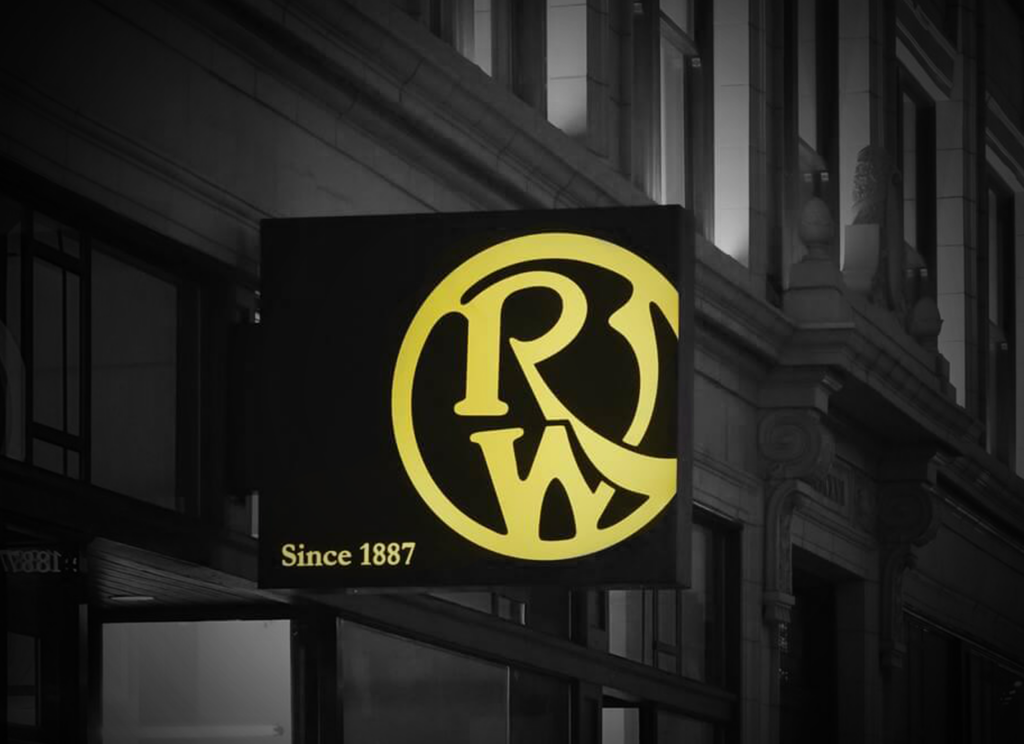
The First Fountains
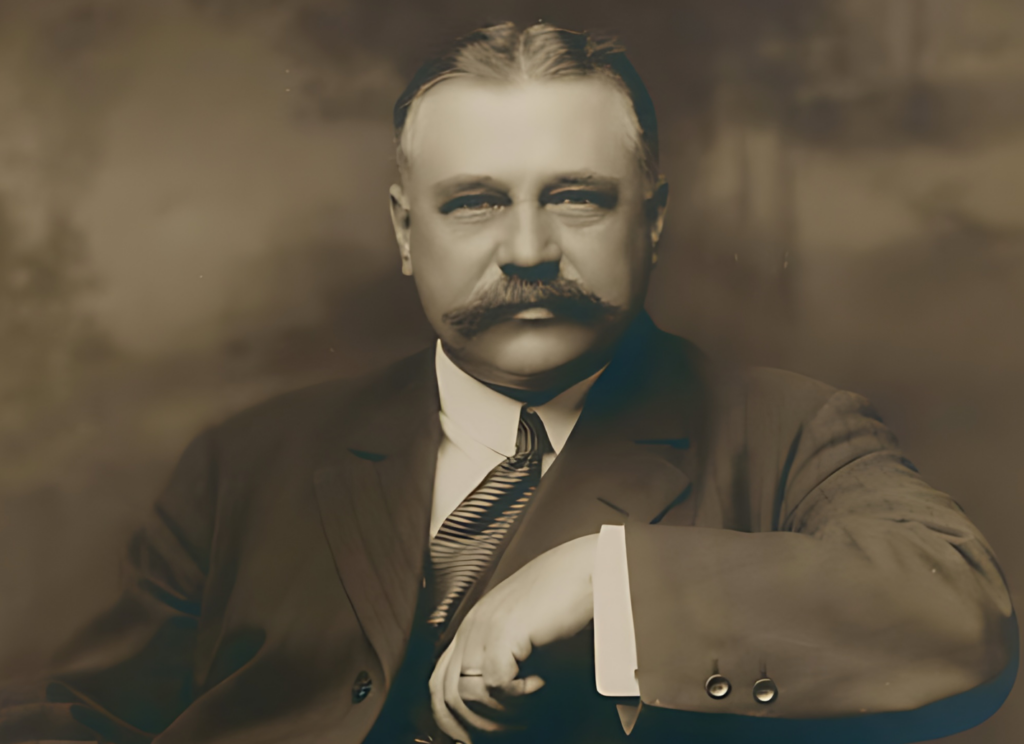
The first fountains in Kansas City were installed for practical purposes8 – as public drinking spots for the many horses passing through the city. The oldest existing fountain in Kansas City was designed by George E Kessler, whose vision would become instrumental in the development of Kansas City. It was Kessler who first imagined Kansas City “with more boulevards than Paris, more fountains than Rome” while it was still seen as a Cowtown. As the city’s first landscape artist, George also helped design Paseo Boulevard and Hyde Park9, among many other projects.
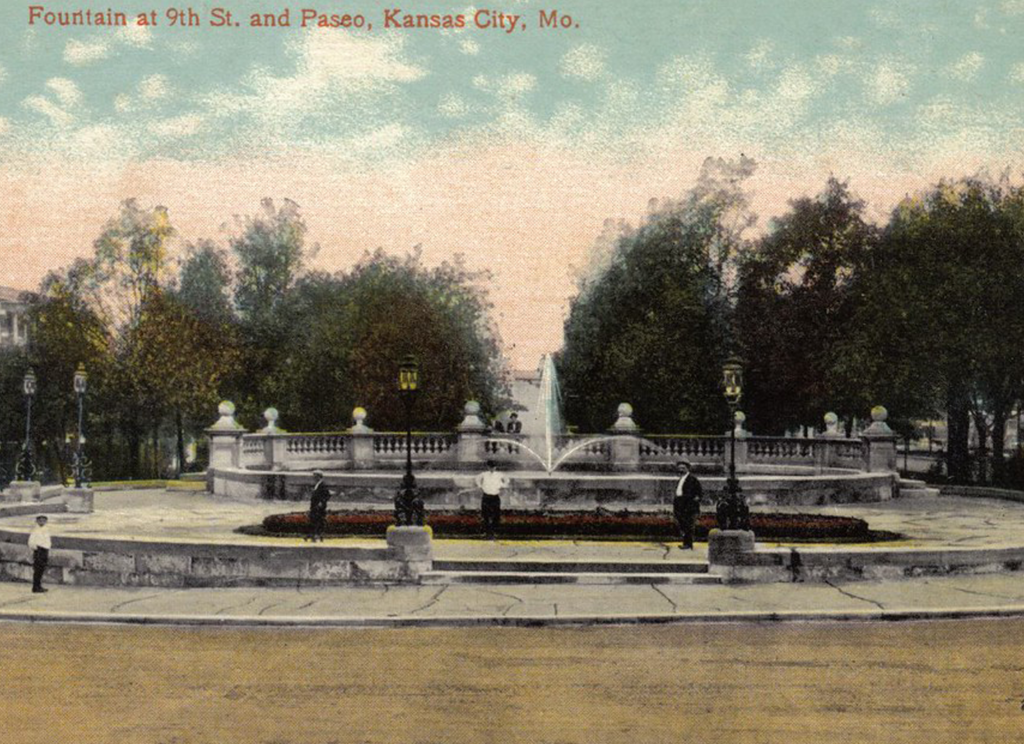
The first municipal fountain in Kansas City was designed by Kessler in 1899 and was meant to resemble the Latone Fountain in Versailles. Though the fountain would later be removed due to structural problems, Kessler made a 2nd fountain the same year located on 9th Street and Paseo. Thankfully this fountain managed to survive, and still exists after 120 years as Kansas City’s oldest municipal fountain, now known as The Women’s Leadership Fountain. In 1904, The Humane Society would produce its first of over 100 fountains with the goal of improved sanitation for people and animals. Their mission makes more sense when you consider disaster would strike just one year prior in 1903.10
The Great Flood of 1903
In the 40 years since its founding in 1853, the population of Kansas City had exploded from roughly 4,500 to 164,000 citizens11, making it the 22nd largest American city by the turn of the 20th century.12 But unbeknownst to them, the region was due for another great flood, and one their infrastructure was largely unprepared for.
Heavy precipitation from April into May of 1903 meant the Kansas River and surrounding soil were already saturated by the time unprecedented rainstorms hit on May 27, displacing 200 in Salina, Kansas.13 By May 29, flooding had spread east to Topeka. Another historic rainfall on May 31 would flood Lawrence, and finally Kansas City.14
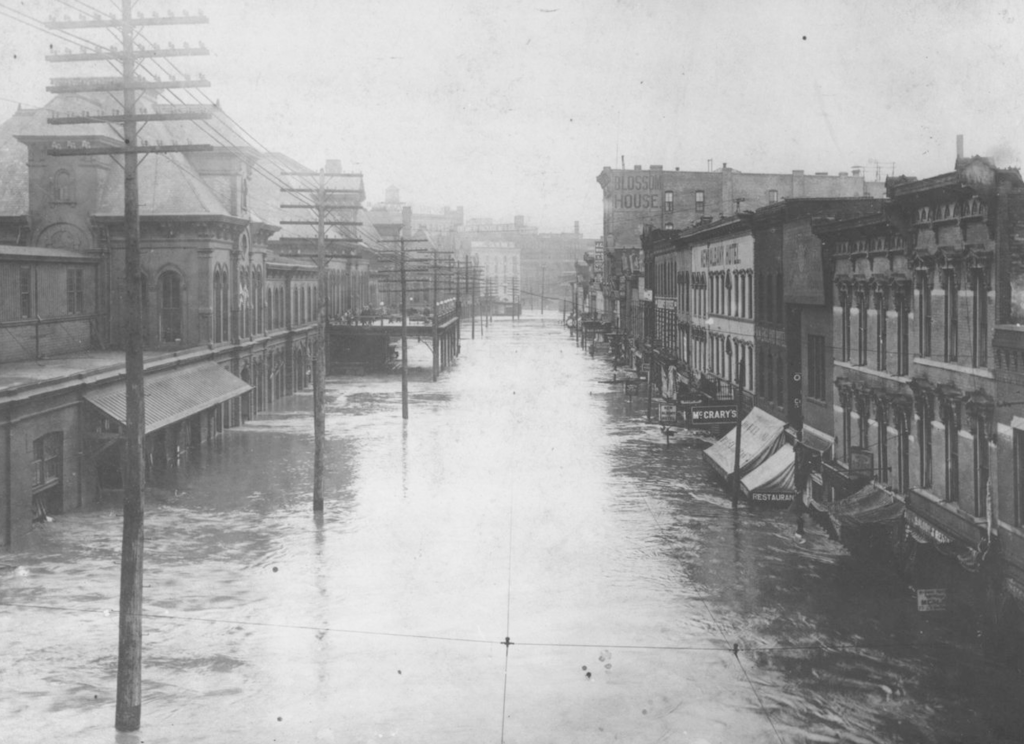
Industrial districts like the West Bottoms were 6 to 12 feet under water. Railroad cars caught fire and spread. With KC Waterworks out of commission, firefighters could only watch in horror. Perhaps worst of all, a large pipe supplying water to Kansas City was destroyed, cutting off water, gas and electric services for 12 days. Sanitation issues developed and looting was rampant.15
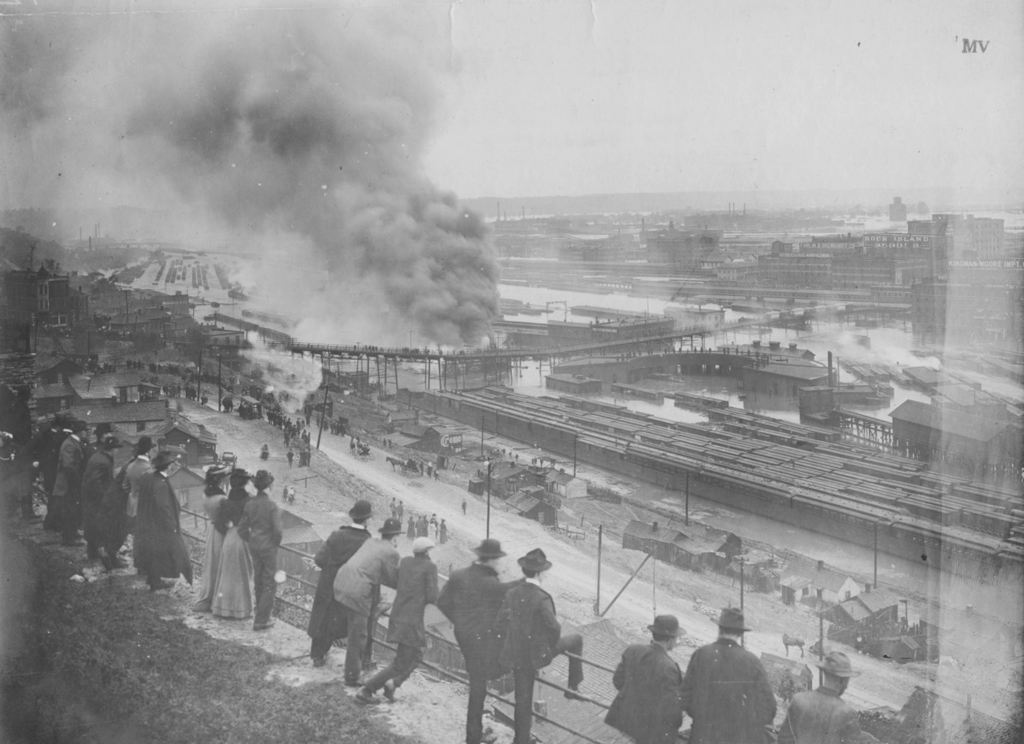
All in all, The Great Flood of 1903 displaced 22,000 and killed 15 people.16 The flood was also economically devastating, causing $22 million in damages — or roughly $767 million today.
HIGHER GROUND
In the wake of the flood, the region banded together. Relief committees from Leavenworth and many Kansas towns sent assistance and supplies to the city. The entire nation started to reconsider its flood preparedness after 1903, building and extending flood prevention walls and developing flood control plans17 that would be cemented in the 1930s under the New Deal.
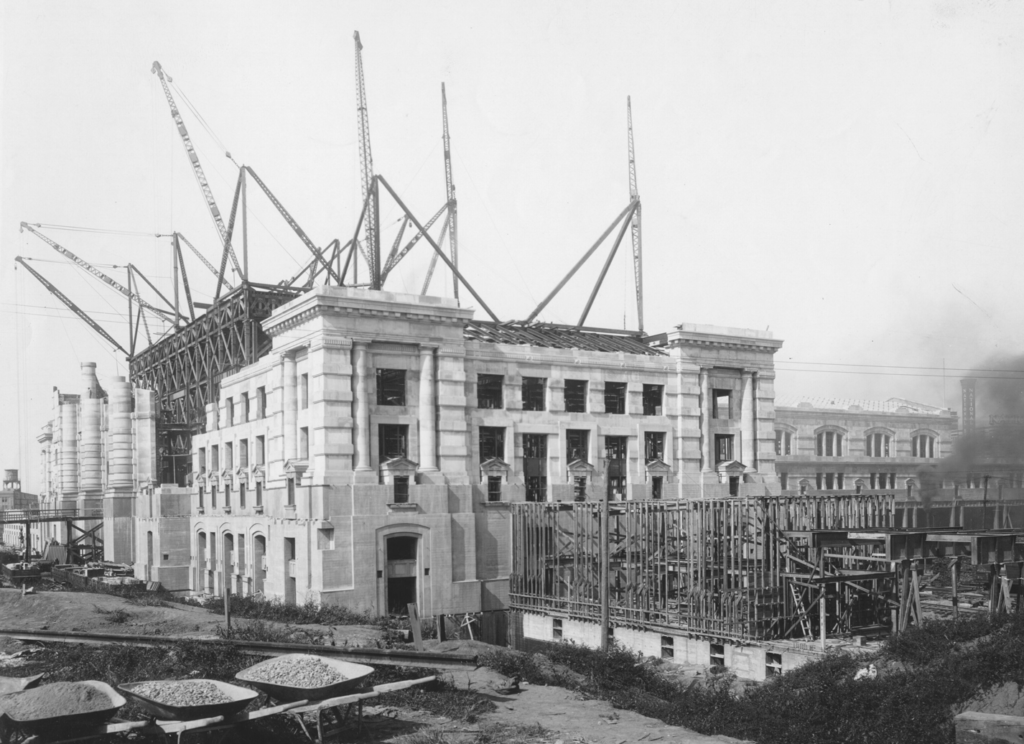
Notably, the aftermath of the flood sent people looking for higher land that was less prone to flooding. Overland Park owes its existence to this flood, as people looked to settle on higher ground nearby. Union Station as we know it was also formed out of this flood. Before 1903 the Union Depot was located in the city’s industrial West Bottoms district. The flood left the railroad station out of commission for months, leaving them no choice but to relocate to a safer area. They chose 25th Street and Grand Ave18 for its proximity to businesses and distance from the floodplain, where Union Station remains today.
In Part 2, we’ll be heading into the mid-20th century. Here Kansas City would be met by two more unstoppable forces of nature: another major flood, and a man by the name of J.C. Nichols.
- https://www.nps.gov/cali/learn/photosmultimedia/upload/Trails_to_the_East_and_West_of_McCoy_Park-508.pdf ↩︎
- https://web.archive.org/web/20101217001549/http://jchs.org/175th%20Anniversary_files/Timeline.htm ↩︎
- https://www.plumbingsupply.com/pmamerica.html ↩︎
- https://www.tomorrowsworldtoday.com/manufacturing/history-of-running-water/ ↩︎
- http://www.waterworkshistory.us/MO/Kansas_City/index.htm ↩︎
- https://www.prier.com/history/ ↩︎
- https://rwco.com/our-history/ ↩︎
- https://www.visitkc.com/visitors/things-do/attractions/everything-you-need-know-about-fountains-kansas-city ↩︎
- https://www.kcfountaintours.com/kc-first-fountain/ ↩︎
- http://electronicvalley.org/derby/Greenway/Fountains/Kansas%20City,KS.htm ↩︎
- https://worldpopulationreview.com/us-cities/kansas-city-mo-population ↩︎
- http://demographia.com/db-uscityr1900.htm ↩︎
- https://pubs.usgs.gov/fs/2003/0019/report.pdf ↩︎
- https://www.kshs.org/kansapedia/flood-of-1903/17221 ↩︎
- https://www.kckpl.org/kansas/articles/views-of-the-past/series-5-great-floods.pdf ↩︎
- https://northeastnews.net/pages/great-flood-displaces-22000/ ↩︎
- https://kchistory.org/blog/devastation-and-controversy-history-floods-west-bottoms ↩︎
- https://www.kcur.org/arts-life/2015-08-10/how-floods-shaped-the-kansas-city-we-know-today ↩︎
